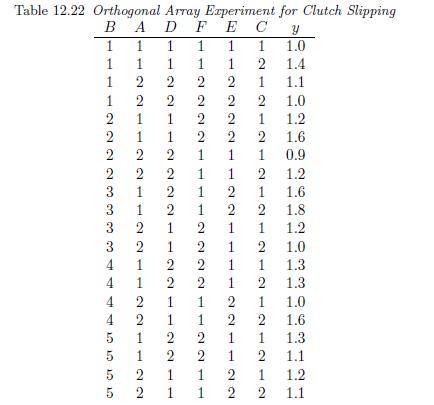6. An experiment originally performed by the National Railway Corporation of Japan (Taguchi and Wu, 1980) was
Question:
6. An experiment originally performed by the National Railway Corporation of Japan (Taguchi and Wu, 1980) was re-analyzed by Box and Meyer
(1986b). The control factors in the design were A, kind of welding rods;

B, period of drying; C, welded materials; D, thickness; E, angle; F, open-
ing; G, current; H, welding method; and J, preheating. Taguchi and Wu also considered the interactions AC, AG, AH, and GH. The design and response y= tensile strength of welds is shown in Table 12.23 where e1 and e2 are unassigned columns that represent confounded interactions.
(a) Calculate eects for each of the fteen columns in Table 12.23, and make a normal plot to identify factors that aect the tensile strength.
(b) Fit a model to the data including only the eects that appear signicant on the normal plot, and calculate the residuals from the tted model.
(c) Calculate the sample variance of residuals from the last model for the ????
and + level of each column in Table 12.23, and calculate the dispersion statistic (given by Equation (12.5)) for each column. Make a normal plot of the dispersion statistics and identify any potential dispersion eects.
(d) Modify the SAS macro in the appendix to simultaneously estimate the location-dispersion eect using the method of iterative weighted least squares.
(e) What factor levels do you recommend to maximize the tensile strength with minimum variation?

Step by Step Answer:






